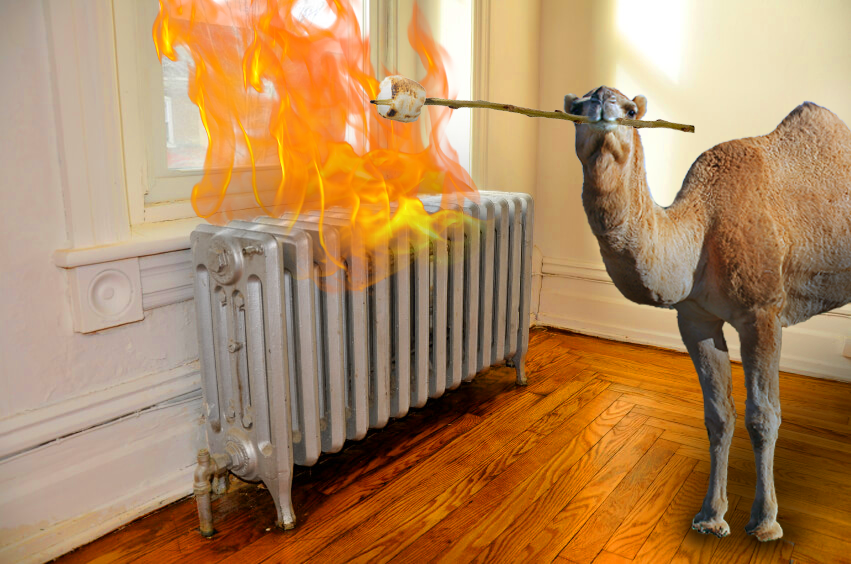Courtesy of Robbie Lynch
Now that we’re officially over the hot and humid hump, Conn has turned on the radiators. Many students complain about the uncomfortable conditions created by the radiators. Catie Clarke ‘26 said, “The radiators smell weird. You won’t know what it is at first, but it’s the radiators.” Personally, I haven’t noticed a stench yet, but then again, I haven’t experienced the heaters for as long as she has. Bea Shannon ‘27 says the “sound is absolutely terrible.” As a fellow resident of the Branford House basement, Ellie Frisbie ‘27 agrees with Bea, stating that “the ticking sound that they make is equatable to the ticking time bomb of my patience.” It’s clear that the radiator-generated sound is disrupting students’ sleep and causing annoyance in their day-to-day lives.
It’s clear that there are many unanswered questions and concerns regarding heating, so I decided to ask Facilities for answers. Assistant Dean of Student Engagement and New Programs Geoff Norbert put me in contact with Interim Vice President for Administration/Executive Director of Facilities Management and Campus Planning Justin Wolfraft.
I first asked him about my dorm’s primary concern: the noise. He said, “Steam radiators will often hiss or bang due to a buildup of condensate or a leaking valve. If this occurs, please submit a work request through CamelWeb. The radiator may need to be bled or a valve may need to be replaced.” This means that those noises we all hear are actually indicative of potential genuine problems with our radiators. This was news to me, and probably would be to other as well.
As far as the procedure for turning on the heat, he explained that first the “boilers’ safeties are tested,” and after “tests have been completed, the steam boilers are brought up to about 10 psi.” Though each dorm building is raised to the same or near-same pressure, there are obvious differences in the temperature experience felt across campus. He said that “Many of the campus buildings are provided with steam heat from the Powerhouse. There are sensors in various locations throughout the buildings. The Powerhouse takes an average of the sensors to determine the temperature of the building and cycles the steam valve or pump to maintain the average temperature setpoint for each building.” It seems that most dorms rely on a factored average in determining temperature.
What I gleaned from the variety of students’ opinions is that there is frustration with radiators and general unawareness regarding how heating actually works. Regardless, the heating is on, and here to stay for a considerable time. Wolfraft predicted that the heating will end “anytime between April 15 and May 15.” Until then, all we can do is deal with the conditions it creates in the meantime.









